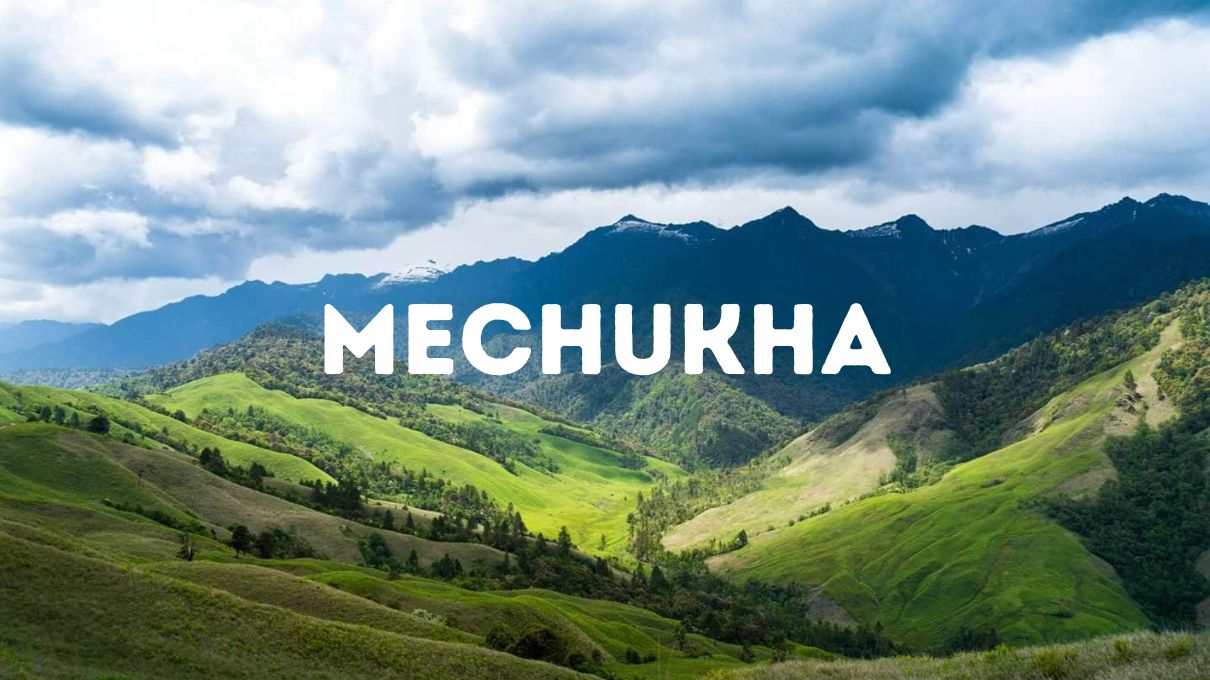Mechukha (Menchukha): The Jewel of Arunachal Pradesh
Nestled at an elevation of 6,000 feet (1,829 meters) above sea level in the Mechukha Valley of Arunachal Pradesh, Mechukha, or Menchukha as referred to in the Memba dialect, is a pristine town with cultural and geographical significance. The name is imbued with meaning, translating to “the land blessed with medicinal snow-fed water from rivers and streams.” This picturesque town is located in the Shi Yomi district, showcasing the unspoiled beauty of the northeast.
Mechukha: Unveiling the Pristine Charm of Arunachal
Geographical Significance and Location
Situated on the banks of the Yargep Chu (Siyom River), Mechukha’s scenic beauty is unparalleled, with snow-capped mountains, lush green valleys, and crystal-clear streams making it a destination of tranquility. Historically, Mechukha Valley was called Pachakshiri before the 1950s, reflecting its long-standing significance and heritage in the region.
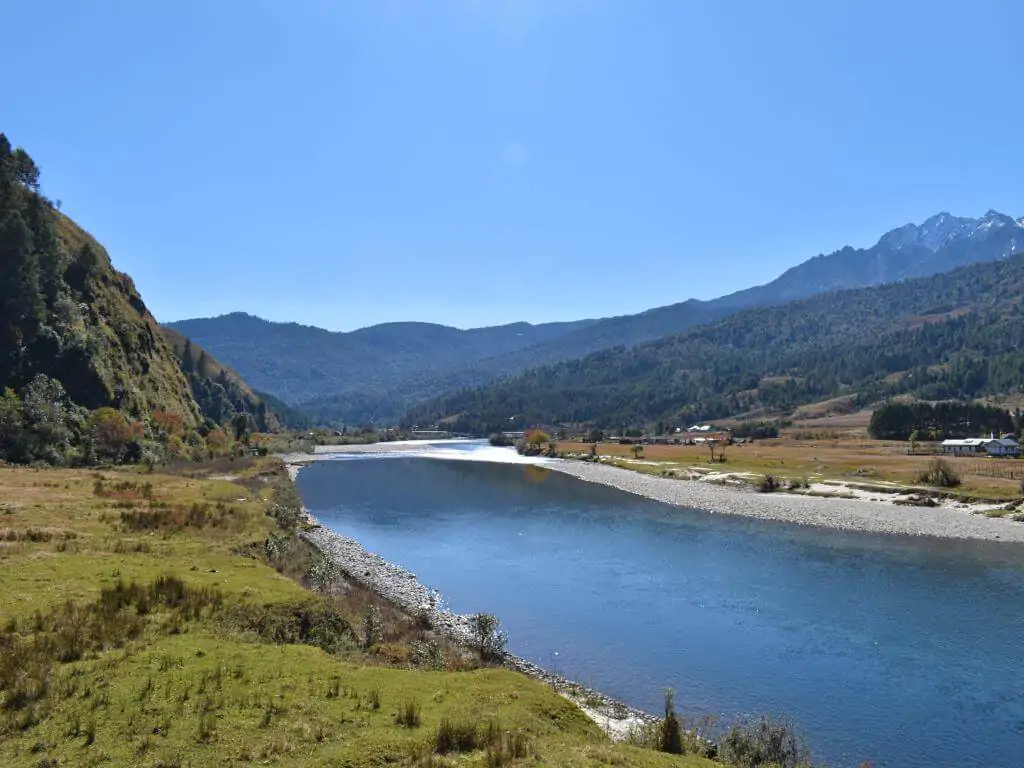
The Line of Actual Control (LAC), specifically the McMahon Line, runs just 29 kilometers north of Mechukha, marking the boundary between India and China. This proximity to the India-Tibet border highlights the area’s strategic importance, especially given the history of border tensions.
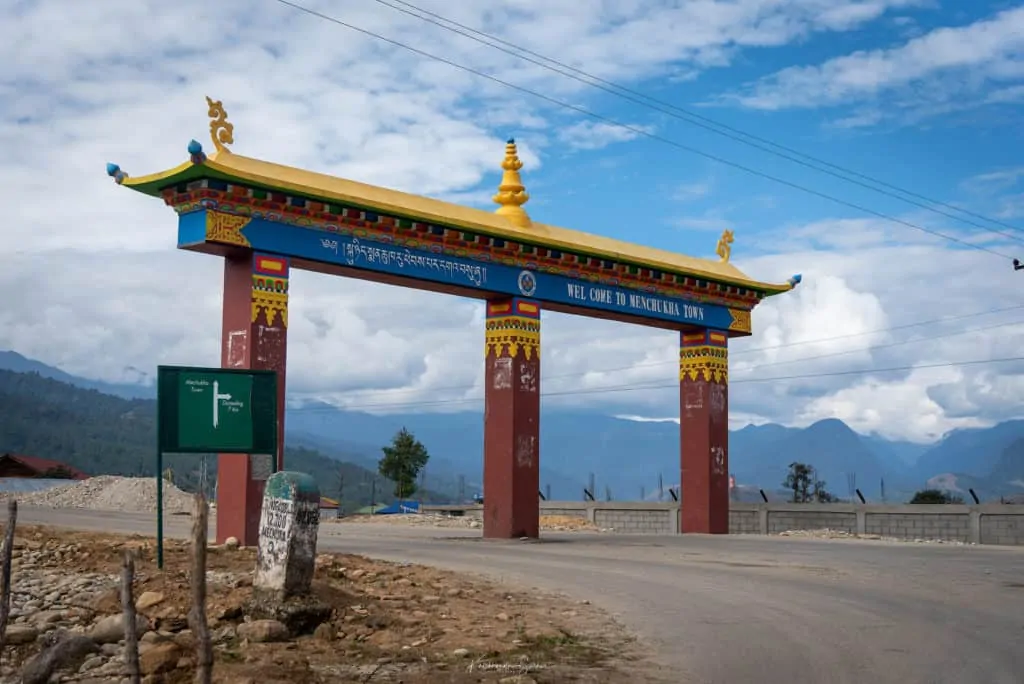
Connectivity and Accessibility
Mechukha is accessible via one of the strategic India-China Border Roads, emphasizing its critical position in terms of defense and connectivity. It is located:
- 47 km northwest of Tato, the district headquarters of Shi Yomi, and
- 187 km north of Aalo, a major town in the state.
The town also hosts an Advanced Landing Ground (ALG) with an airstrip, further solidifying its connectivity. The ALG is vital for logistics and defense operations, ensuring Mechukha remains accessible despite its remote location.
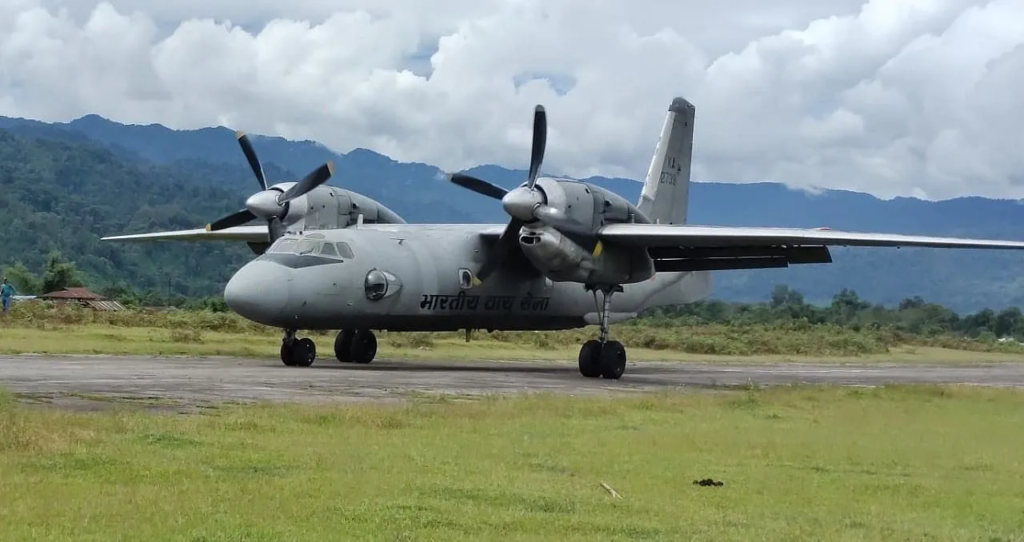
Background and Etymology
The name Menchukha has significant meaning, where:
- Men means medicine,
- Chu signifies water, and
- Kha refers to snow or ice.
These components describe the essence of the region, enriched with medicinal waters and surrounded by snow-clad peaks.
Historical Context
In earlier times, the valley was accessible only via the Advanced Landing Ground (ALG), maintained by the Indian Air Force. The locals, predominantly the Memba people, traded cattle, such as Mithun, for salt and medicines with neighboring Tibet. Horses were their primary mode of transport, and those who owned many cattle were regarded as wealthy.
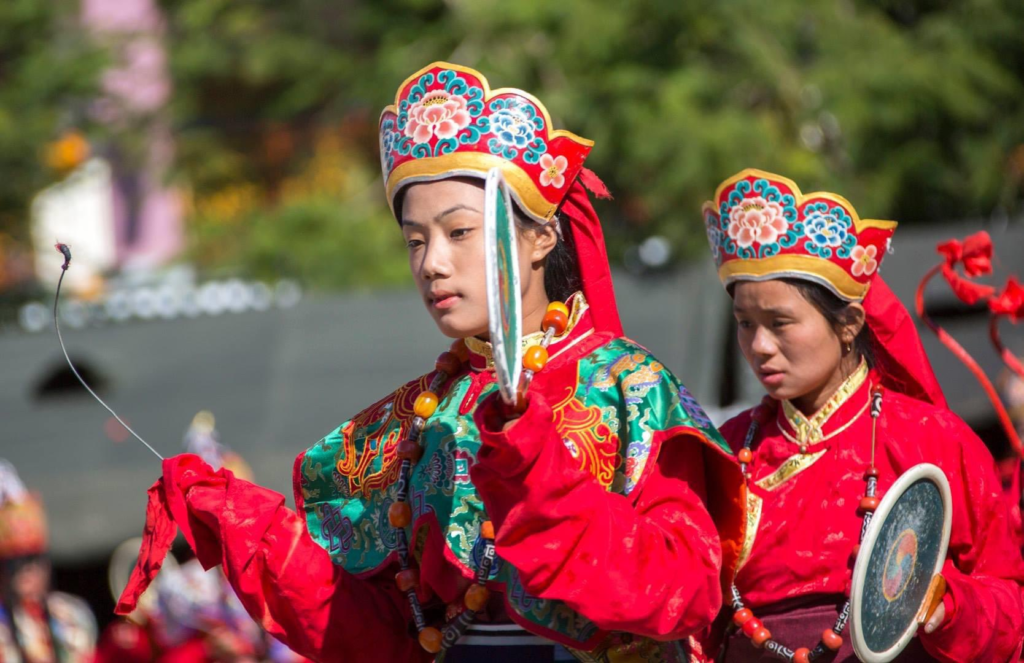
The region holds historical and religious importance, with the 400-year-old Samten Yongcha Monastery, a contemporary of the famous Tawang Monastery. It is speculated to be older, as per research reports, further enhancing its cultural prestige.
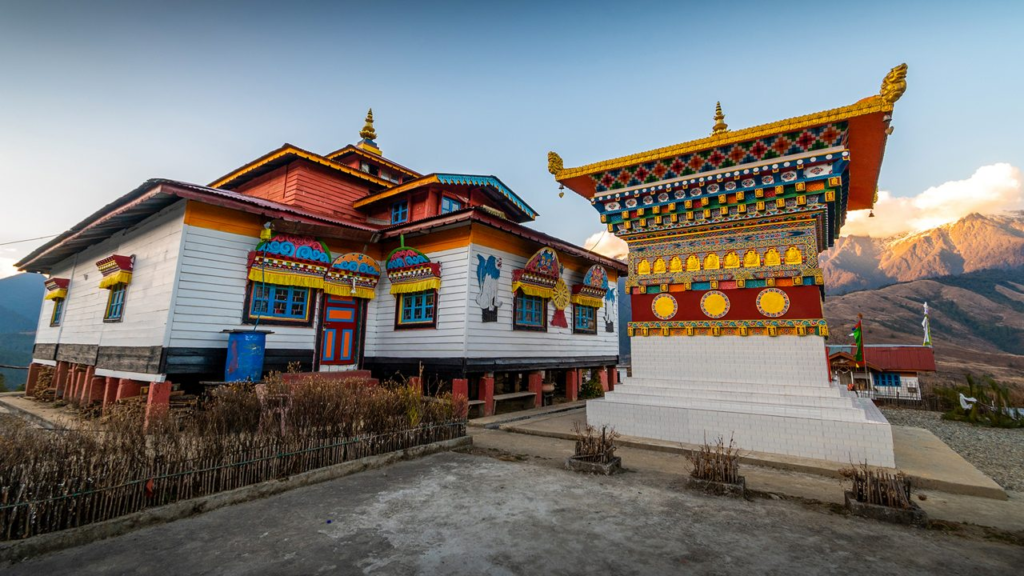
Demographics and Culture
Mechukha Valley is home to the Memba, Adi, and Tagin tribes, with the Memba dominating the local population. Languages spoken here include Memba, Adi, Tagin, Hindi, and English.
Religious Practices:
- Mahayana Buddhism is predominant, represented by ancient monasteries like Samten Yongcha.
- Donyi-Poloism and Christianity are also practiced.
The culture blends Tibetan influence with local traditions, evident in festivals, attire, and daily life.

Transport and Connectivity
Mechukha is now connected to the wider region through modern infrastructure:
- Airstrip:
- The Advanced Landing Ground (ALG) has been upgraded with a concrete runway, extending to 4,700 feet, ensuring better connectivity for defense and logistics.
- A helicopter service operates under the UDAN scheme twice a week, alongside plans for private 9-seater air services.
- Strategic Roads:
- Highways connect Mechukha to Tato and Aalo.
- The proposed Mago-Thingbu to Vijaynagar Arunachal Pradesh Frontier Highway along the McMahon Line will pass through Mechukha, bolstering strategic and economic development.
Tourism in Mechukha Valley: A Deep Dive into its Alluring Charm
Mechukha Valley is rapidly becoming one of Arunachal Pradesh’s top tourist destinations, offering a blend of natural beauty, cultural richness, and biodiversity. Its relatively untouched and serene environment makes it a paradise for nature lovers, adventure enthusiasts, and spiritual seekers alike.
Natural Beauty of Mechukha Valley
1. Siyom River (Yargyap Chu):
The Siyom River, locally called Yargyap Chu, cuts through the Mechukha Valley like a silver ribbon. Its clear, snow-fed waters originate from the nearby mountains, flowing with a tranquil yet majestic presence.
- The riverbanks offer ideal spots for picnics and nature walks, where tourists can relax while being enveloped by the sounds of rippling water.
- For adventure enthusiasts, the Siyom River presents opportunities for kayaking, rafting, and angling in its pristine waters.
- During winter, the surrounding snow-capped peaks reflecting on the river create a surreal, picture-postcard view that photographers adore.
2. Gentle Hills and Snow-Capped Mountains:
The valley is surrounded by undulating hills and majestic snow-capped mountains, which form a mesmerizing natural backdrop year-round.
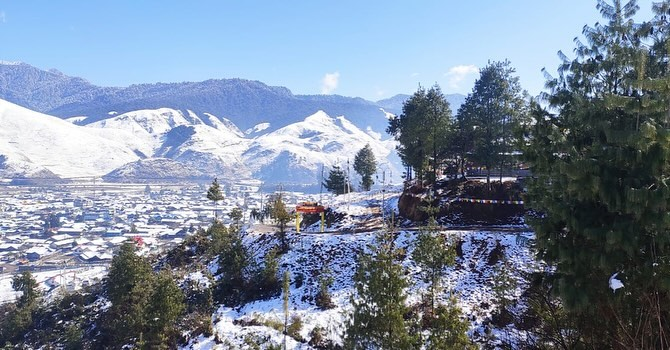
- In spring and summer, the hills are adorned with vibrant wildflowers, adding color to the green slopes.
- During the autumn season, the hills transform into shades of red, yellow, and orange, making it an excellent destination for photographers and painters.
- Winter cloaks the landscape in snow, creating a magical ambiance for tourists seeking peace and solitude.
3. Pine Forests:
The Menchukha Pine Forests envelop the valley with their towering, green canopy.
- These forests are perfect for trekking and birdwatching, offering glimpses of rare avian species.
- Nature trails through the pine woods lead to hidden viewpoints, where visitors can marvel at panoramic vistas of the valley.
Cultural Heritage of Mechukha Valley
1. Samten Yongcha Monastery (400-Year-Old Monastery):
Situated atop a hill on the western edge of the valley, this historic Buddhist monastery stands as a testament to Mechukha’s spiritual and cultural significance.
- Heritage Significance: Believed to be older than the revered Tawang Monastery, it offers a wealth of Buddhist artifacts, scriptures, and statues, which attract history buffs and spiritual seekers.
- Architectural Splendor: The monastery exhibits traditional Tibetan-style architecture, featuring intricate wood carvings and colorful frescoes.
- Meditative Retreat: Visitors often climb up to the monastery for meditation sessions and to experience the panoramic views of the valley below.
2. Local Festivals and Traditions:
The cultural essence of Mechukha Valley can also be explored through its tribal festivals, showcasing the vibrant heritage of the Memba, Adi, and Tagin communities. Traditional dance performances, local crafts, and cuisine offer a closer look at the life and traditions of the valley’s inhabitants.
Biodiversity of Mechukha Valley
1. Mechuka Giant Flying Squirrel (Petaurista mechukaensis):
This unique species of giant flying squirrel discovered in the valley has put Mechukha on the global biodiversity map.
- Classified as a “Data Deficient Species” by the IUCN Red List, it remains a subject of great interest among wildlife enthusiasts and researchers.
- Observing this rare nocturnal creature in its natural habitat offers an unmatched experience for nature lovers.

2. Diverse Flora and Fauna:
The valley’s ecosystems, ranging from alpine meadows to dense forests, support a wide variety of wildlife and plants.
- Rare Wildlife: Apart from the flying squirrel, the valley is home to Himalayan species like red pandas, Himalayan black bears, and various reptiles.
- Botanical Treasures: It’s a haven for nature lovers, with blooming orchids, medicinal herbs, and rare endemic plant species scattered across the landscapes.
Accommodation Options for Tourists
With the rising influx of visitors, Mechukha Valley offers comfortable and scenic lodging options for all kinds of travelers.
1. Tourist Lodges and Inspection Bungalows:
- Operated by the government, these lodges provide basic facilities while maintaining a warm, rustic charm.
- They are often located near major attractions or scenic areas, making them an ideal choice for budget travelers.
2. Hotels and Homestays:
- Emerging hotels cater to travelers seeking modern amenities such as Wi-Fi, room service, and private balconies with mountain views.
- Local homestays, run by tribal families, offer an authentic experience of Memba or Adi life. Guests are treated to delicious home-cooked meals and stories of local legends and customs.
3. Campsites and Eco-Lodges:
- For those seeking adventure, eco-lodges and campsites are perfect choices.
- These accommodations allow visitors to immerse themselves in nature, offering activities like stargazing and outdoor bonfires amid serene surroundings.
Tourist Activities and Suggestions
To fully experience the Mechukha Valley:
- Adventure Sports: Try trekking to hidden viewpoints, rafting on the Siyom River, and paragliding over the valley for aerial views.

- Nature Walks: Walk through the pine forests, enjoying the tranquility and fresh air.
- Cultural Tours: Participate in village tours to interact with the Memba community, learning their customs and traditional practices.
- Wildlife Watching: Carry binoculars for spotting exotic bird species and rare mammals.
- Photography: Capture breathtaking landscapes during sunrise and sunset for unforgettable memories.
Political and Strategic Importance
Mechukha serves as an assembly constituency in Arunachal Pradesh. As of June 2024, Pasang Dorjee Sona represents the Mechukha constituency. Its strategic location, close to the Line of Actual Control (LAC) along the McMahon Line, underscores its importance for defense, with a significant military presence.
Conclusion
Mechukha, with its breathtaking landscapes, rich cultural tapestry, and strategic significance, is a hidden gem of Arunachal Pradesh. Its evolving infrastructure, coupled with increasing tourist interest, positions it as a significant destination for both adventure seekers and cultural enthusiasts. Whether for its serene beauty or its storied past, Mechukha remains a land worth exploring.

